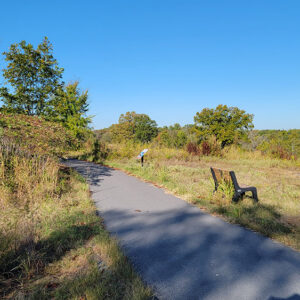calsfoundation@cals.org
Audubon Arkansas
Audubon Arkansas was established in 2000 as the twenty-fifth state office of the National Audubon Society through a seed grant from the Winthrop Rockefeller Charitable Trust. Audubon Arkansas’s mission is to inspire and lead Arkansans in environmental education, resource management, habitat restoration, bird conservation, and enlightened advocacy. In 2003, Audubon Arkansas was recognized as “Conservation Organization of the Year” by the Arkansas Wildlife Federation.
Robert Shults was the founding board chairman of Audubon Arkansas. Shults, an Arkansan, served on the National Audubon Society board of directors from 1980 to 1986. The chairman of the National Audubon Society at the time was Donal C. O’Brien. O’Brien and Shults both served on the board of trustees of the Winthrop Rockefeller Charitable Trust. At the time, the National Audubon Society was seeking to set up field offices in each of the United States, and the two men facilitated a major gift from the Winthrop Rockefeller Charitable Trust to establish an office in Arkansas. Kenneth L. Smith was hired as state director in 2001. In 2002, R. Donald Nelms was named board chair; he was succeeded by Anna W. Riggs in 2006.
Audubon Arkansas works in the areas of bird conservation, habitat restoration, and environmental education. Bird conservation projects include the Important Bird Areas (IBA) Program and conservation of waterbirds, quail, and the ivory-billed woodpecker. The IBA Program identifies habitat areas in Arkansas that consistently support a significant abundance of birds of conservation concern. To date, twenty-eight such sites have been identified in Arkansas. These areas serve as a focus for Audubon’s bird conservation work, including monitoring, advocacy, public education, and habitat restoration. The volunteer IBA Technical Advisory Committee, consisting of approximately fifteen of the state’s bird experts, is instrumental in policy decisions related to the state’s IBA work. William M. Shepherd was the founding chairman of the IBA Technical Advisory Committee, and Dr. Douglas A. James has served as chairman.
Audubon Arkansas’s habitat restoration projects focus on aquatic ecosystems, including Fourche Creek, War Eagle Creek, and the west fork of the White River. These rivers are degraded by development and urban sprawl, which encourage sedimentation, floodplain encroachment, and conversion of wetlands. A program emphasis is to increase the public’s understanding of the importance of watershed issues and water resources. Audubon promotes water quality conservation by working with landowners, local government, and citizens in the aforementioned watersheds to stabilize streambanks, restore riparian and wetland habitats, acquire conservation easements, and encourage best management practices in land use.
Audubon Arkansas’s environmental education initiative, Common Ground, develops projects with middle schools, high schools, and universities that promote outdoor hands-on science studies for students and their teachers. The use of technology in the field is a growing component of the environmental studies program. Audubon Arkansas was named the Outstanding Resource for Education in 2006 by Little Rock School District.
Currently, Audubon Arkansas has twelve full-time employees, nine board members, and several interns. The main office is in Little Rock (Pulaski County), with a field office in Fayetteville (Washington County).
In 2005, Audubon Arkansas obtained a ninety-nine-year lease from the City of Little Rock for Gillam Park, part of the campus for the future Little Rock Audubon Center. Park, part of the campus for the future Little Rock Audubon Center. Audubon broke ground on the center in November 2008 and moved in the following year, after renovation of the former Granite Mountain Community Center building was complete. This site serves as the state’s first Audubon Nature Center.
For additional information:
Arkansas Audubon Society Records. Special Collections. University of Arkansas Libraries, Fayetteville, Arkansas.
Audubon. New York: National Audubon Society (1999–).
Audubon Arkansas. http://ar.audubon.org/ (accessed September 7, 2023).
Dayer, Kenneth. “The History of the Central Arkansas Audubon Society.” MA thesis, University of Arkansas at Little Rock, 2002.
Fourche Creek Watershed Initiative. http://www.fourchecreek.org (accessed September 7, 2023).
Daniel M. Scheiman
Audubon Arkansas
 Audubon Trail
Audubon Trail  Booker Homes Sign
Booker Homes Sign 




Comments
No comments on this entry yet.